 |



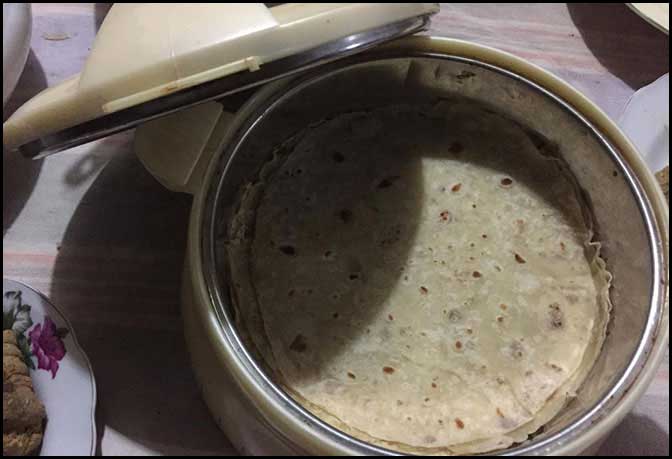

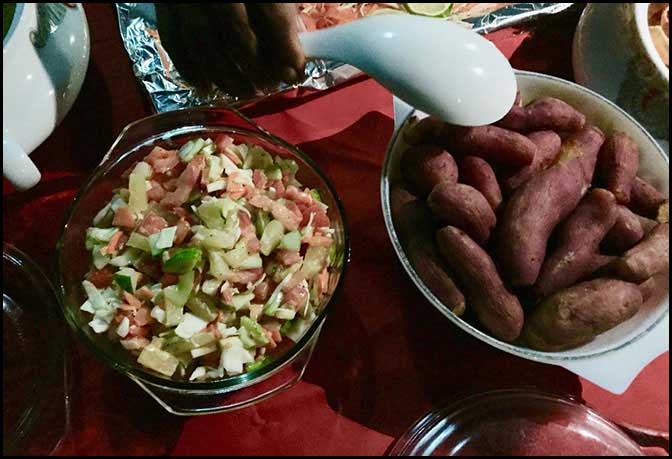
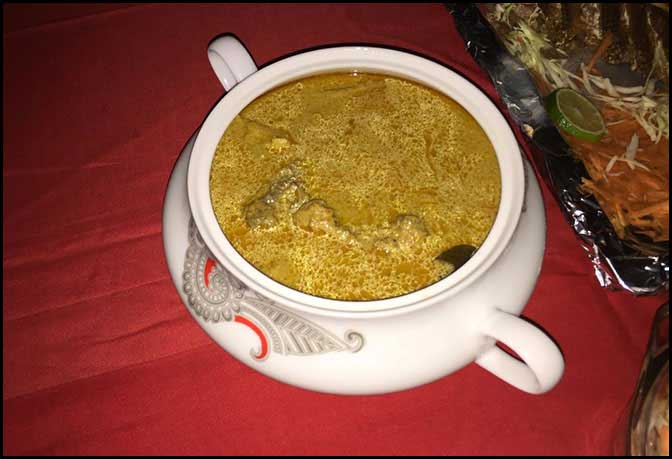
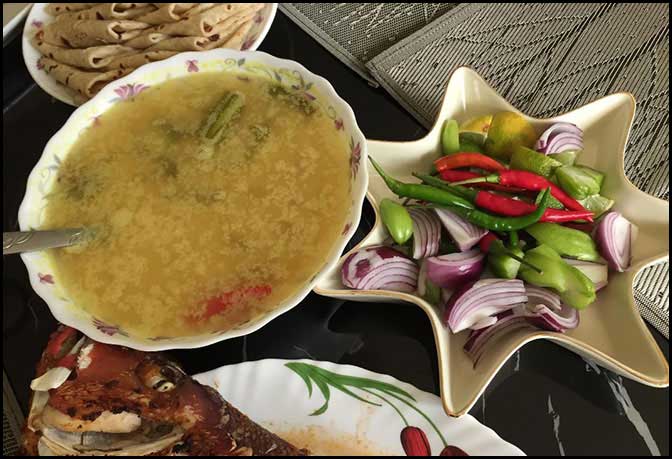

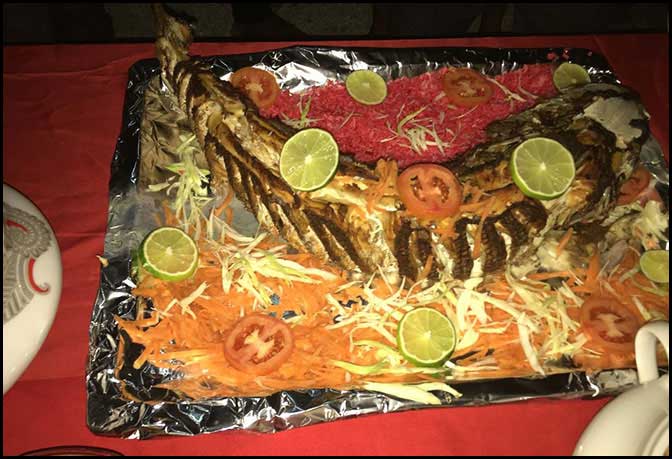





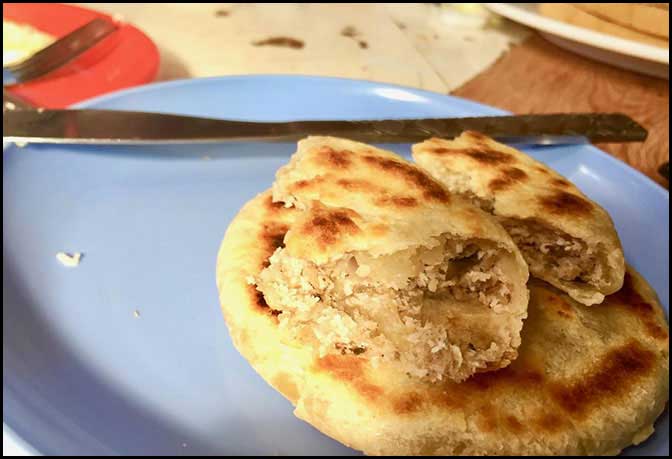
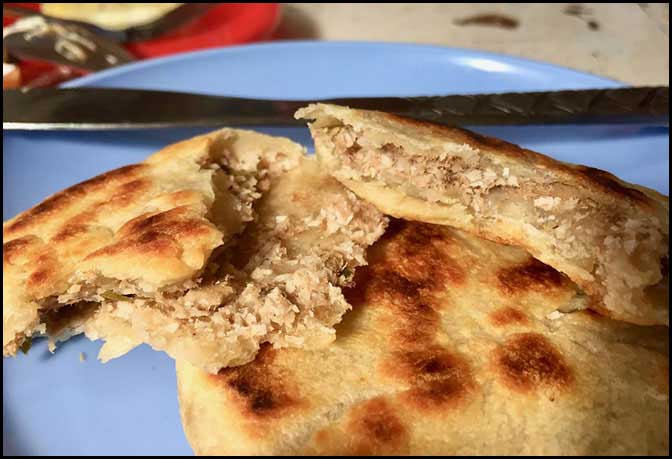




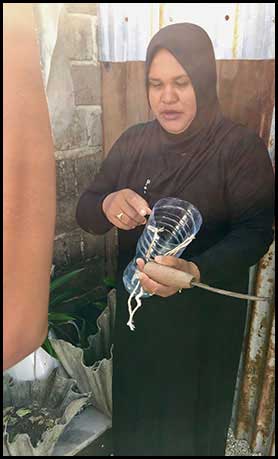





 y Rashid
y Rashid
Local cuisine and invitations to lunches and dinners by friends.
Fish is the main diet of the Maldivian people and both reef fish and deep ocean fish are abundantly used and prepared in many ways. Roshi (roti) and rice are the staples. The roshi is made from white wheat flour and is rolled extremely thin to about 8 inches diameter and heated on both sides on a hot griddle or pan. Each meal was served with a dish full of freshly made roshi, especially for breakfast, and some small roshi (about 3 inches diameter) were stuffed with shredded tuna and rolled into the coconut and flour mix. Like a small Sri Lankan pol roti but with the shredded fished stuffing. A fish curry in coconut milk gravy, and fish curry made dry without coconut milk, a liquidly dhal curry, a moringa (murunga) curry, and sometimes a dry curry with eggplant would be placed on the table. A coconut sambol always accompanied every meal (this is not the fiery red Sri Lankan style sambol), with flaked tuna fish, onions and green chilies would be mixed into it. A dark green leaf like a tropical kale was also served as a curry or just cut up and served fresh. Boiled sweet potato and taro are also served. This is eaten with grated coconut. A raw plate was always served and this included sliced onions, sliced carrots, green chilies or cut up bits of fiery scotch bonnet chilies. A meal would not be complete without a dish of fish soup – this is often made with large chunks of tuna cooked in lightly salted water and maybe a few dried red chilies in a clear broth. The broth is used to pour over the rice. Rihaakuru a thick liquid delicacy made of preserved fish is served as an accompaniment with meals.
A mini samosa filled with a mixture of flaked tuna cooked down with equal amounts of seasoning and spices was served to us as a snack on one island and it was an unusually crunchy and delicious. We had had a variation of these samosas and the mas roshi (mini coconut roti) stuffed with tuna flakes served at breakfast for the conference.
We ate our meals mostly at small restaurants in each island. We were also invited by friends of the group to partake in several very hearty lunches and dinners. Maldivian hospitality is the best. My images will illustrate the food and the meals we enjoyed.
More details are found about different types of tuna and other reef fish and how foods were prepared in time before refrigeration by reading this informative article by Romero-Fries an anthropologist who spent several years living in the islands.
For further Reference:
https://en.wikipedia.org/wiki/Rihaakuru Xavier Romero-Frias, The Maldive Islanders, A Study of the Popular Culture of an Ancient Ocean Kingdom and Clarence Maloney, People of the Maldive Islands
Xavier Romero-Frias. Eating on the Islands - As times have changed, so has the Maldives' unique cuisine and culture. [Himalmag vol 26 no 2, 2013
https://www.academia.edu/4398927/Eating_on_the_Islands_-_As_times_have_changed_so_has_the_Maldives_unique_cuisine_and_culture]
The ruh coconut palm is the national tree if the Maldives. The palm is prevalent in all of the Maldivian islands, and there are five varieties that grow to different heights. Nulu ruh, Rathu ruh, Dhanbu ruh, Jafanah ruh and Kuhi ruh. We drank the fresh the green coconut called Kurumba, and the yellow/orange variety (referred to as Thambili in Sri Lanka). There is a dwarf variety that’s very easy to access.
For further reference. https://www.maldivesbiodiversity.org/Species/Details/1084
https://www.google.com/search?client=safari&rls=en&q=coconut+palm+varieties+in+the+maldives&ie=UTF-8&oe=UTF-8
The palm flower is tapped for toddy. The liquid sap that drips from the flower stalk that has been cut is collected. The traditional vessel for this process is made from two coconut shells that are joined together to form a vessel that has a double coconut shell form.
Any container can be used as seen in the sort video clip. [video of a woman toddy tapper].
Making coconut toddy syrup and sugar solids, very similar to the coconut jaggery produced in Sri Lanka.
We visited the home garden of a toddy syrup maker. She has several of the short variety of coconut palms built with ladders that are easy to access for tapping. The fresh toddy is collected and processed by boiling into thick syrup in a cauldron over a dome shaped hearth made of coral stones that is cemented over. After several hours of stirring and boiling the liquid is reduced to the toddy syrup. [video-making toddy syrup
Some kitchen tools and equipment.
Knives used for toddy tapping. Two different types of knives with wooden handles are used.
Toddy container. The coconut shell container for toddy. Made from attaching two coconut shells together and sealed together to form a container – [images]
Granite grinding stone. This flat stone and roller comes from India, as granite is not found on the islands. Used like a Sri Lankan rectangular miris gala to grind together the grated coconut sambols and dry and wet spices needed for the curries. The shape is squared on one end and a pointed shape on the front end. [video, and still image]
